#sphenacodontids
Text
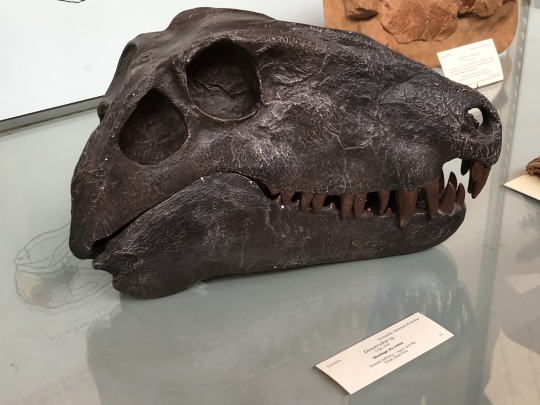
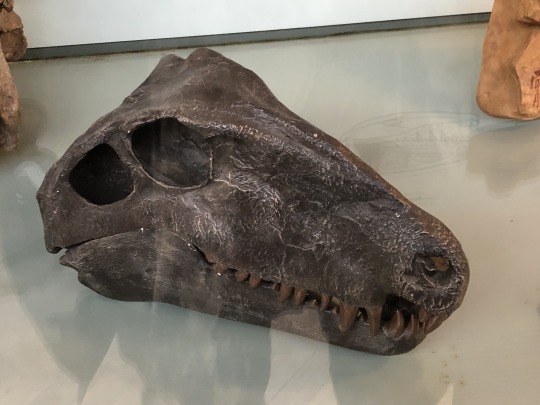
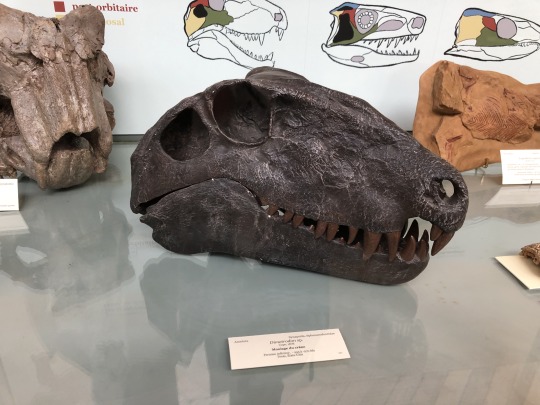
Dimetrodon: it's a thought that I can count on. When my darkest thoughts have got a hold on me, I close my eyes and I remember all their giant teeth. To shake off the problems that have piled on, I picture the sail-backed giants of Dimetrodon.
#dimetrodon#sphenacodontid#synapsid#permian#they're kind of mammals but they look like reptiles#and i bet that difference never bothered them#the doubleclicks#palaeoblr#different views included for paleoart ref and because i found its skull looking oddly pettable#this is a friend
19 notes
·
View notes
Text

24th entry of cursedeya's faketober 2023, today category: Fangs.
PREDATUSK (Predator + Tusk) - Rock/Dragon type.
Is based on a therapsid, a group of prehistoric animals belonging to the sphenacodontid clade, from which mammals are believed to be descended.


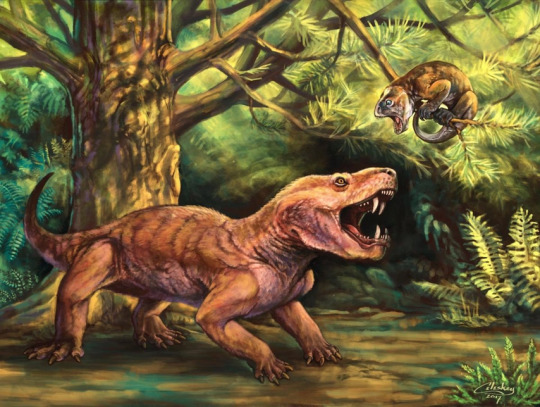
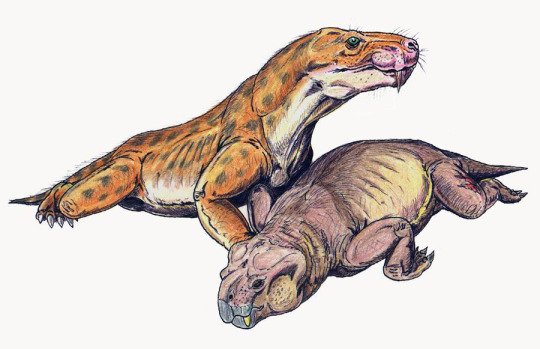
14 notes
·
View notes
Text
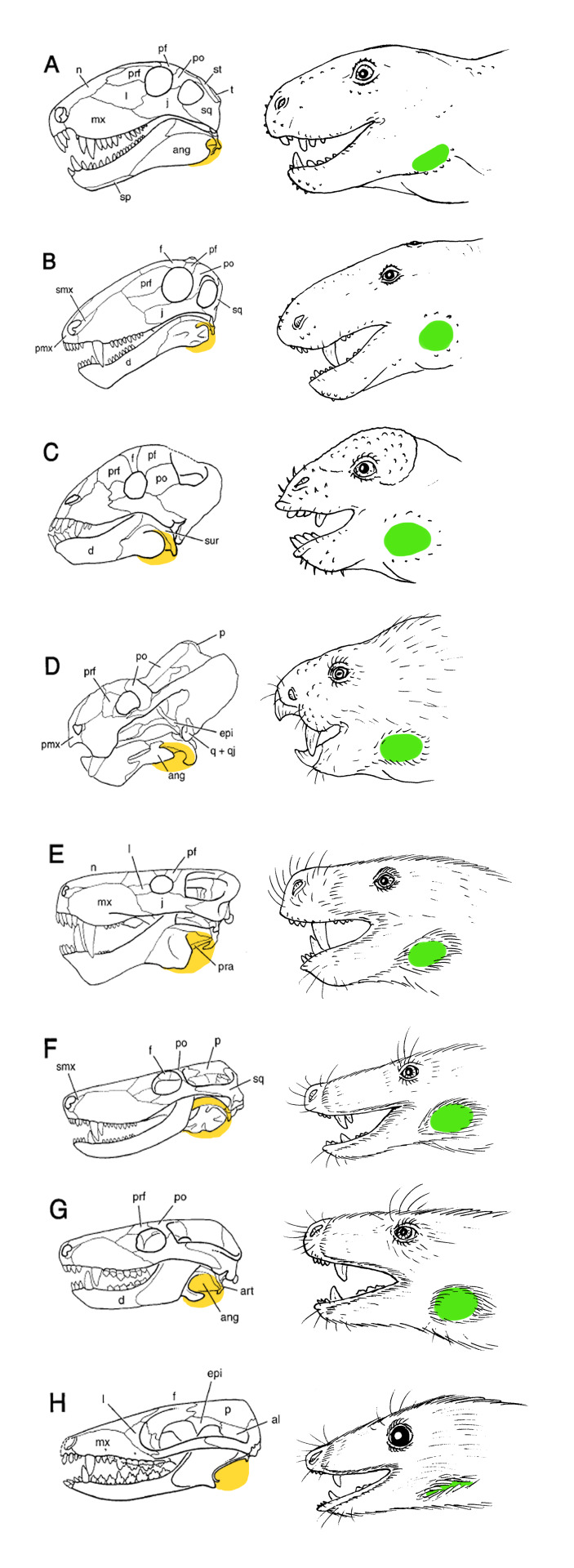
So after making this I've read more stuff and decided that the more conventional version is probably more convincing after all. Here I tried to illustrate some more synapsids just to get a feel for this model. I`ve taken these skulls from Sidor, C.A. Simplification as a trend in synapsid cranial evolution (2001). Unfortunately, finding anything other than side-views is still basically impossible, so I still have no idea how these bones actually look in 3D, and thus cannot guarantee any accuracy for my interpretation of these animals' aural anatomy.
Anyway, here I show my best guess at how the proto-tympanic cavity (yellow) would go into the articular notch, behind the reflected lamina. The outer wall of this cavity (initially formed mainly by the bone of the lamina which is gradually replaced by a membrane) would function as a primitive eardrum (green), and the malleus/articular would somehow touch it from inside the cavity. This proto-eardrum would probably be indistinguishable from the surrounding skin, like the eardrums of turtles, though in more derived species it may be visible like in frogs. I imagine in Morganucodon-grade mammaliaforms it would sink at least a little into an earhole (more like an ear-slit in my drawing) with an ear canal, but without a 3D view of the bones it's impossible to say for sure.
A - Dimetrodon, a sphenacodontid.
B - Biarmosuchus, a biarmosuchian.
C - Tapinocaninus, a dinocephalian.
D - Kannemeyria, a dicynodont.
E - Leontocephalus, a gorgonopsid.
F - Ictidosuchoides, a therocephalian.
G - Thrinaxodon, a cynodont.
H - Morganucodon, a mammaliaform.
0 notes
Text
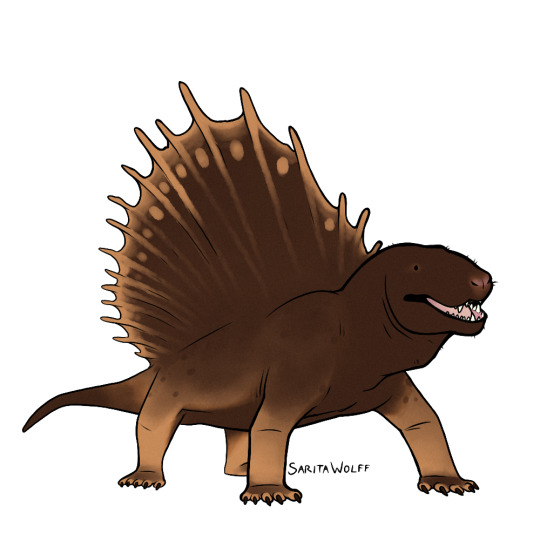
Arguably the most famous non-mammalian synapsid is Dimetrodon. There are over a dozen species of Dimetrodon, and for my first one I’ve chosen D. grandis. (mostly just due to the fact that there was a skeletal readily available.)
Famous for its tall spine, Dimetrodon is often confused for a dinosaur and seen as a contemporary, though it lived long before dinosaurs existed. As a synapsid, it is more closely related (though not a direct ancestor) to mammals than reptiles. Larger species would have probably been the apex predators of their environments, while smaller species would have filled different niches.
Dimetrodon grandis was the second largest species of Dimetrodon, and had serrated teeth specialized in slicing through flesh. It lived in early Permian Texas.
17 notes
·
View notes
Video
Sphenacodontid synapsid 2
by Brennan York
93 notes
·
View notes
Photo
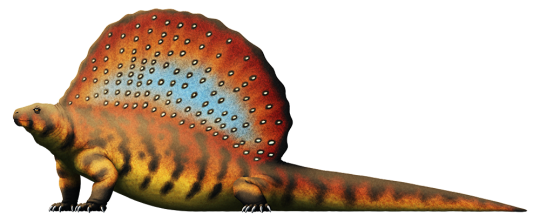
Edaphosaurids were a fairly early branch of the synapsids – the evolutionary lineage whose only surviving members are modern mammals – and were some of the earliest known tetrapods to develop into large specialized herbivores. They also had huge spiny sails on their backs resembling those seen in their cousins the sphenacodontids (including the famous Dimetrodon), but the two groups actually evolved those features completely independently of each other.
Although their fossils are known from both North America and Europe, their European remains are very rare and fragmentary. Currently the best-known specimen is made up of a recently-discovered partial spinal column and a few hand and tail bones.
Given the name Remigiomontanus robustus, this edaphosaurid lived in western Germany during the end of the Carboniferous and the start of the Permian, around 300-298 million years ago. About 1.2m long (3'11"), it seems to represent an intermediate form between small insectivorous-or-omnivorous edaphosaurids like Ianthasaurus and the huge herbivorous Edaphosaurus.
(Interestingly the paper that names Remigiomontanus also makes a brief mention that the protruding cross-bars on edaphosaurid sails may have anchored larger keratinous coverings, which could have made them look even more spectacularly spiky and suggests their sails may have served an anti-predator function. Hopefully if this is true we'll see further information get officially published about it sometime!)
———
Tumblr | Pillowfort | Twitter | Patreon
#science illustration#paleontology#paleoart#palaeoblr#remigiomontanus#edaphosauridae#eupelycosauria#synapsid#art#sailback#stem-mammal
191 notes
·
View notes
Note
is dimetrodon a dinosaur? if not, what is it?
Nope! It’s a sphenacodontid - a group of synapsids, which is the group that contains mammals. So it’s actually closer to you and I than to dinosaurs or lizards!
55 notes
·
View notes
Note
Weren't dimetrodons pre mammalian. They're cynodonts right. Before mammsliaformes?
That is true, tho Dimetrodon is a Sphenacodontid and not a cynodont.
You are one of the few people to take not of my blog title “Post mammalian Synapsid”. Which is actually a terrible “pun” on “dimetroDONE”.
I also like the title cause all synapsids for now on will be mammals reguardless, I just like the mental image of mammals evolving “back” into an irrecognisable “reptilian” state
21 notes
·
View notes
Text

Like Dimetrodon, Secondontosaurus was another sail-backed Sphenacodontid from early Permian Texas. Unlike Dimetrodon, it had long slender jaws, which seemed to have been specialized for catching fish or poking into burrows. Also unlike dimetrodon, Secondontosaurus seems to have been pretty rare, and as its fossils are rarely found I didn’t have much information to go off of! But I wanted to include just one more “sail back” and I think Secondontosaurus is a pretty unique one.
9 notes
·
View notes
Text
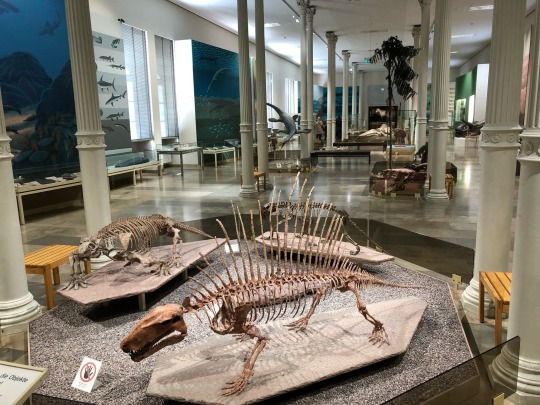




I really liked that front and centre of the paleontology hall at the Staatliches Museum für Naturkunde were not dinosaur skeletons, but three synapsids. Much of the rock in the area is red sandstone from the Permian and Triassic (in fact I noticed while hiking in the Pfälzerwald that even the molehills were red!) so there’s been plenty of our own stem-relatives found here. These three are Dimetrodon, Gorgonops, and Tetragonias.
#synapsids#synapsid#dimetrodon#gorgonops#tetragonias#sphenacodontid#therapsids#gorgonopsid#dicynodont#skeletons#paleontology#dinosaurs are amazing#but they are not the be all end all of paleocreatures#our ancestors are really cool too
393 notes
·
View notes
Text
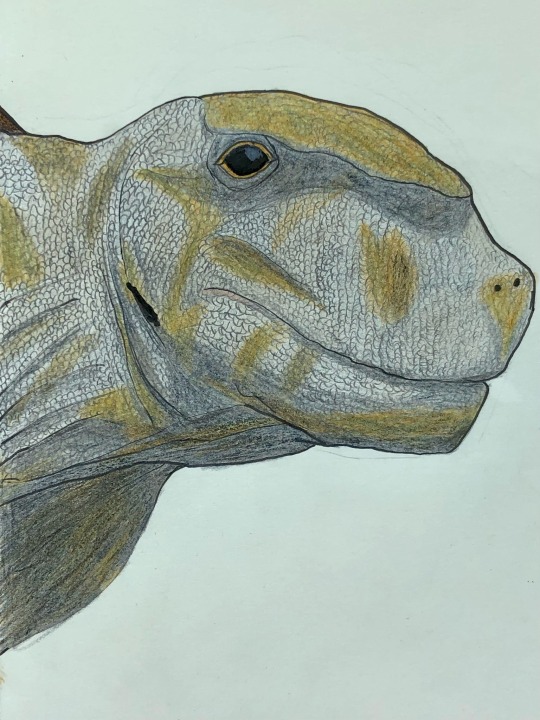
Dimetrodon, the most famous of all extinct synapsids! It's a shame most of that fame seems to include it getting called a dinosaur. It's both closer to us and much older than the dinosaurs! They lived about 290 million years ago during the early Permian in the southwestern United States, which was a swampy river delta area at the time. It was a carnivore about the size of a crocodile and, of course, had a rather impressive sail on its back that only a glimpse of made it into this portrait. I decided to restore it with the scaly skin that Varanopsids, an even earlier more rootward branch of the the synpasid family tree, are known to have, although bare skin with neither scales nor fur as Estemmosuchus had is also a possibility.
Drawn while listening to Dimetrodon by The Doubleclicks.
#dimetrodon#synapsid#synapsids#stem-mammal#mammal-like reptile#my art#sphenacodontid#synapsids are wonderful and so are dinosaurs#don't make them both sad by calling them all the same thing#appreciate and love them both!#birds and mammals both have very cool extinct cousins#paleoart
13 notes
·
View notes
Text

Dimetrodon and Edaphosaurus surfing.
#synapsids#dimetrodon#sphenacodontid#edaphosaurus#edaphosaurid#coproliteposting#so the backstory to this is that an early idea of what they did with the sails#is that they would use them to surf around in water#i don't think they meant it like this#but this is the image that popped into my mind#and now you have to see it too#the weird lines on the side of edaphosaurus was me trying to do a pattern and realising it looked godawful in pen too late
5 notes
·
View notes